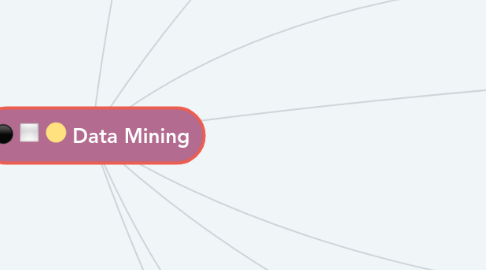
1. Business Intelligence
1.1. Security
1.1.1. Process Level Security
1.1.2. System Level Security
1.1.3. Object Level Security
1.1.4. Data Level Security
1.2. Techniques
1.2.1. visualization
1.2.1.1. images
1.2.1.2. diagrams
1.2.1.3. animations
1.2.2. Query and reporting
1.2.3. online analytical processing (OLAP)
1.2.4. text mining
1.2.5. statistical analysis
1.2.6. data mining
1.3. Characteristics
1.3.1. Ranking Reports
1.3.2. What-If Analysis
1.3.3. Executive Dashboards
1.3.4. Interactive Reports
1.3.5. Geospatial Mapping
1.3.6. Operational Reports
1.3.7. Pivot Tables
1.3.8. Ad-Hoc Reports
1.4. Design
1.4.1. Tools & Technologies
1.4.2. Logical & Physical Architecture
1.4.3. Data Extraction and Transformation
1.4.4. Analytical Reports
1.4.5. Dashboard Design
1.4.6. Star Schema/ Snowflake Schema Design
1.4.7. Data Model
1.5. Infrastructure
1.5.1. Data volumes
1.5.2. Agile development
1.5.3. Requirements
1.5.4. Server resources and utilization patterns
1.6. Architecture
1.6.1. Components
1.6.1.1. Data Sources
1.6.1.2. Data Warehouse Server
1.6.1.3. ETL process
1.6.1.4. Tools and technologies
1.6.1.5. Enterprise information management (EIM)
1.6.1.6. Data modelling
1.6.1.7. Appliance systems
2. Architecture
2.1. Components
2.1.1. Data Sources
2.1.1.1. store information in the form of plain text, spreadsheets, or other forms of media. WWW is one of the biggest sources of data.
2.1.2. Data Warehouse Server
2.1.2.1. contains the actual data ready to be processed
2.1.3. Data Mining Engine
2.1.3.1. performs all kinds of data mining techniques like association, classification, characterization, clustering, prediction, etc.
2.1.4. Pattern Evaluation Modules
2.1.4.1. responsible for finding various patterns with the help of Data Mining Engine
2.1.5. Graphical User Interface
2.1.5.1. provides communication between user and data mining system
2.1.6. Knowledge Base
2.1.6.1. It interacts with the knowledge base to get various inputs and updates from it.
2.2. Types
2.2.1. No Coupling
2.2.1.1. retrieves data from particular data sources
2.2.2. Loose Coupling
2.2.2.1. memory-based data mining architecture that retrieves data from the database and stores the data in those systems
2.2.3. Semi Tight Coupling
2.2.3.1. use various features of the warehouse of data. It includes sorting, indexing, aggregation
2.2.4. Tight coupling
2.2.4.1. a data warehouse component features are employed for performing data mining tasks. The architecture provides scalability, performance, and integrated information
3. Tools
3.1. Rapid Miner
3.2. Oracle Data Mining
3.3. IBM SPSS Modeler
3.4. KNIME
3.5. Python
3.6. Orange
3.7. Rattle
4. Techniques
4.1. Machine Learning
4.1.1. Supervised
4.1.1.1. Predictive
4.1.1.1.1. Regression
4.1.1.1.2. Time Serious Analysis
4.1.1.1.3. Prediction
4.1.1.1.4. Classification
4.1.2. Un-supervised
4.1.2.1. Descriptive
4.1.2.1.1. Summarization Analysis
4.1.2.1.2. Sequential Patterns
4.1.2.1.3. Clustering
4.1.2.1.4. Association
4.2. Neural networks
4.3. Artificial intelligence
4.4. Data cleaning and preparation
4.5. Long-term memory processing
4.6. Tracking patterns
4.7. Outlier detection
4.8. Decision trees
4.9. Statistical techniques
4.10. Visualization
4.11. Data warehousing
4.11.1. Design
4.11.1.1. Top-down Design Approach
4.11.1.2. Bottom-Up Design Approach
4.11.2. Model Types
4.11.2.1. virtual warehouse
4.11.2.2. data mart
4.11.2.3. enterprise data warehouse
4.11.3. Features
4.11.3.1. Subject Oriented
4.11.3.2. Time-Variant
4.11.3.3. Integrated
4.11.3.4. Non- Volatile
4.11.4. Schema
4.11.4.1. Star Schema
4.11.4.2. Snowflake Schema
4.11.4.3. Fact Constellation Schema
4.11.5. Tools
4.11.5.1. Amazon Redshift
4.11.5.2. Microsoft Azure
4.11.5.3. Google BigQuery
4.11.5.4. Snowflake
4.11.5.5. Micro Focus Vertica
4.11.5.6. Amazon DynamoDB
4.11.5.7. PostgreSQL
4.11.6. Components
4.11.6.1. Load manager
4.11.6.2. Warehouse Manager
4.11.6.3. Query Manager
